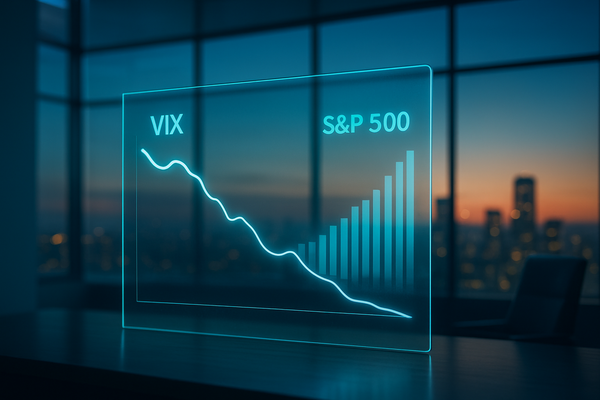Crypto Quakes Ripple Through Wall Street: Volatility and Correlation Reshape Investment Landscape

The cryptocurrency market is once again demonstrating its inherent volatility, with recent dramatic price swings sending tremors across traditional financial markets. As of late October 2025, digital assets, once heralded as an uncorrelated hedge, are exhibiting an increasingly strong and undeniable link to global macroeconomic factors and U.S. equities. This deepening correlation presents a complex challenge for investors, eroding the perceived diversification benefits of cryptocurrencies and demanding a re-evaluation of risk management strategies in an interconnected financial ecosystem.
This heightened interdependence was vividly underscored by a significant flash crash earlier in October, which saw billions in crypto market capitalization evaporate almost instantaneously, coinciding with a downturn in traditional stocks. The event has reignited debates about the true nature of digital assets within a diversified portfolio and their growing influence on broader investor sentiment and asset allocation decisions across the financial spectrum.
The 'RockTober' Rattle: A Deep Dive into Recent Market Turmoil
October 2025, aptly nicknamed "RockTober" by some market commentators, witnessed a stark reminder of the cryptocurrency market's unpredictable nature. Around October 10-11, a massive flash crash occurred, wiping out an estimated $20 billion to $370 billion in market capitalization across various digital assets. Bitcoin (BTC-USD), the world's largest cryptocurrency, plunged from highs near $126,000 to below $105,000, while Ethereum (ETH-USD) experienced drops of 11-20%. Altcoins faced even more severe declines, with some losing 30-70% of their value within minutes. This seismic event was largely triggered by a sudden announcement from U.S. President Donald Trump, escalating tariffs on Chinese imports, which sent shockwaves through both traditional and digital markets simultaneously.
The timeline leading up to this moment has been characterized by several key developments that have amplified crypto's sensitivity to external factors. The approval of spot Bitcoin ETFs in early 2024 marked a pivotal moment, ushering in significant institutional capital and further integrating cryptocurrencies into the traditional financial system. While these ETFs provided a new avenue for investment, they also made the crypto market more susceptible to conventional market forces, acting as an amplifier for macroeconomic signals. Throughout 2025, ongoing geopolitical tensions, such as the aforementioned US-China trade disputes, and the Federal Reserve's monetary policy decisions—including a 25 basis point rate reduction in September that initially buoyed markets—have become primary catalysts. Furthermore, the prevalence of highly leveraged trading positions within the crypto market means that even minor price movements can trigger massive liquidation cascades, as seen in the October crash which liquidated over $19 billion in trading positions.
Key players involved in this scenario range from individual retail investors, often exposed through highly speculative altcoin holdings, to large institutional investors managing significant capital flows into Bitcoin and Ethereum via ETFs and other regulated products. Regulatory bodies, grappling with the rapid evolution of digital assets, also play a crucial role, with ongoing regulatory uncertainty contributing to investor apprehension. The initial market reaction to the October flash crash was one of widespread panic, with the Crypto Fear & Greed Index plummeting to "extreme fear" levels, reflecting a broader sentiment of risk aversion that quickly spilled over into traditional equities. As of late October 2025, Bitcoin is hovering around $109,000 to $114,000, testing crucial support levels, while implied volatilities for Bitcoin reached 30-day highs ahead of the Federal Reserve's upcoming October meeting, indicating continued market apprehension.
The increasing correlation between cryptocurrencies and traditional stock markets is a trend that has solidified over the past year. Citibank's recent report explicitly highlights a renewed strengthening of this link, noting that Bitcoin and Ethereum are once again moving in tandem with the U.S. stock market and gold prices. Data indicates a robust connection, with Bitcoin's 30-day rolling correlation with the S&P 500 frequently exceeding 70% over the last five years. In 2025, this correlation tightened further, reaching 0.86 with the S&P 500 and a high of 0.92 with the NASDAQ, underscoring Bitcoin's growing interdependence with traditional risk assets. This means that significant shifts in the stock market often see cryptocurrencies follow suit, diminishing their role as a true portfolio diversifier and increasingly positioning them as a risky asset. The ongoing US government shutdown in October 2025 has further compounded this uncertainty, delaying crucial economic data and intensifying market pressures across both traditional and crypto sectors.
Companies Navigating the Crosscurrents: Winners and Losers
The intensifying correlation between cryptocurrency market volatility and traditional equities creates a complex landscape where certain public companies stand to win or lose. Companies with significant direct or indirect exposure to digital assets are particularly vulnerable to these market shifts, while others might find opportunities in the resulting market dynamics.
On the winning side, companies that offer robust, regulated infrastructure for institutional crypto adoption may see increased demand. This includes firms providing secure custody solutions, prime brokerage services, and sophisticated trading platforms designed for large-scale investors. For example, financial technology companies like Coinbase Global (NASDAQ: COIN), despite being directly exposed to crypto price fluctuations, could benefit in the long run from increased trading volumes and a flight to regulated platforms if volatility drives out less secure options. Similarly, traditional financial institutions that have successfully integrated crypto services, such as Fidelity Investments (NYSE: FNF) or BlackRock (NYSE: BLK) through their spot Bitcoin ETFs, could see continued asset inflows as investors seek familiar, regulated pathways to crypto exposure, especially during periods of market uncertainty. Furthermore, companies specializing in blockchain analytics and security, which help investors and regulators understand and mitigate risks in a volatile market, may also experience growing demand for their services.
Conversely, companies with substantial holdings of cryptocurrencies on their balance sheets, or those whose business models are heavily reliant on the speculative retail crypto market, face significant headwinds. For instance, MicroStrategy (NASDAQ: MSTR), a software company that has famously adopted Bitcoin as its primary treasury reserve asset, sees its stock price highly correlated with Bitcoin's performance. During periods of sharp crypto downturns, MicroStrategy's valuation can be severely impacted, leading to potential losses for its shareholders. Similarly, companies involved in crypto mining, such as Marathon Digital Holdings (NASDAQ: MARA) or Riot Platforms (NASDAQ: RIOT), are directly affected by Bitcoin's price, as it dictates the profitability of their operations. A sustained period of low prices or high volatility can compress their margins, hinder expansion plans, and lead to significant stock price depreciation. Retail-focused crypto exchanges or platforms with less stringent regulatory oversight could also suffer from reduced trading activity and a loss of investor confidence during volatile periods, potentially impacting their revenue streams and user acquisition rates.
Moreover, the spillover effects extend beyond direct crypto exposure. The perception of cryptocurrencies as a "risky asset" means that during periods of crypto market stress, investor sentiment towards other high-growth, speculative technology stocks can also sour. This "risk-off" mentality can lead to broader market corrections, impacting companies that may have no direct crypto involvement but are perceived as part of the broader speculative tech bubble. For instance, highly valued software companies or innovative tech startups, particularly those with less established profitability, might see their valuations compressed as investors de-risk their portfolios in response to crypto-induced market jitters. This indirect effect highlights how crypto market dynamics are increasingly influencing capital allocation decisions across the entire equity market, forcing investors to re-evaluate their exposure to growth-oriented sectors.
Broader Implications: A Shifting Financial Paradigm
The recent surge in cryptocurrency market volatility and its undeniable spillover into traditional stock markets signify a profound shift in the global financial paradigm. This event is not an isolated incident but rather fits into broader industry trends characterized by increasing financial interconnectedness and the mainstreaming of digital assets. The narrative of cryptocurrencies as an entirely uncorrelated asset class, once a cornerstone for diversification strategies, has largely dissolved. Instead, they are now widely perceived as a highly sensitive barometer for global risk appetite, reacting acutely to macroeconomic shifts, geopolitical tensions, and central bank policies. This evolving perception forces a fundamental re-evaluation of portfolio construction, where digital assets must now be considered within the context of broader market cycles rather than as an independent hedge.
The ripple effects of this intensified correlation extend far beyond direct crypto holders, impacting competitors and partners across the financial ecosystem. Traditional asset managers who initially dismissed cryptocurrencies are now compelled to develop sophisticated strategies for managing their clients' exposure, or risk being left behind. Fintech companies and payment processors that have integrated crypto services face increased scrutiny regarding their risk management frameworks and operational resilience during periods of extreme market stress. Furthermore, the heightened volatility could accelerate the consolidation within the crypto industry, favoring well-capitalized and regulated entities over smaller, less secure platforms. This could lead to a more mature, albeit potentially less decentralized, crypto landscape in the long term, as institutional standards become increasingly paramount.
From a regulatory and policy perspective, the events of October 2025 provide further impetus for global authorities to accelerate the development of comprehensive regulatory frameworks for digital assets. The current patchwork of regulations contributes to market uncertainty and can exacerbate volatility. Policymakers are likely to focus on areas such as consumer protection, market integrity, anti-money laundering (AML) measures, and systemic risk management. The increasing correlation with traditional finance means that regulators can no longer view crypto markets in isolation; their potential to trigger broader financial instability is a growing concern. Discussions around stablecoin regulations, capital requirements for institutions holding crypto, and clear guidelines for spot ETF products are expected to intensify, potentially leading to more harmonized international standards.
Historically, periods of rapid innovation and market integration often bring about increased volatility and unforeseen correlations. The dot-com bubble of the late 1990s, for instance, saw speculative technology stocks move in lockstep, with their eventual bust having significant ripple effects across the broader market. While the scale and underlying technology differ, the current crypto-equity correlation shares similarities in how a nascent, high-growth sector can become deeply intertwined with established financial systems. Another parallel can be drawn to the early days of derivatives markets, which, while offering new hedging opportunities, also introduced new layers of complexity and potential for systemic risk. The key takeaway from these historical precedents is that as new asset classes mature and integrate, their behavior tends to converge with existing market dynamics, rather than remaining entirely independent.
The Road Ahead: Navigating a New Normal
Looking ahead, the short-term outlook for both cryptocurrency and traditional markets remains intertwined and susceptible to ongoing macroeconomic and geopolitical developments. Investors should brace for continued volatility, particularly around key economic data releases, central bank announcements, and any further escalations in global trade tensions. In the immediate future, market participants will closely watch the Federal Reserve's upcoming October meeting for clues on monetary policy, as well as the resolution of the US government shutdown, both of which are expected to significantly influence risk appetite across asset classes. Short-term possibilities include further consolidation in the crypto market, with Bitcoin potentially testing lower support levels if negative sentiment persists, while traditional equities may experience continued pressure from de-risking flows.
In the long term, the increased correlation necessitates strategic pivots and adaptations across the investment landscape. For individual investors, this means a more sophisticated approach to portfolio diversification, where cryptocurrencies are viewed as a high-beta asset within the broader risk spectrum, rather than a standalone hedge. Institutional investors may increasingly focus on risk-adjusted returns from their crypto allocations, utilizing advanced analytics and hedging strategies to navigate volatility. Companies with direct or indirect crypto exposure will need to bolster their balance sheet management and risk disclosure practices. Potential strategic adaptations could include greater emphasis on fundamental analysis of blockchain projects, focusing on those with real-world utility and strong governance, rather than purely speculative plays.
Market opportunities may still emerge amidst the turbulence. Periods of heightened volatility often present entry points for long-term investors willing to stomach short-term fluctuations, particularly for established assets like Bitcoin and Ethereum, which have demonstrated resilience over multiple market cycles. Furthermore, the demand for sophisticated financial products that manage crypto risk, such as options, futures, and structured products, is likely to grow, creating opportunities for financial service providers. Challenges, however, include the persistent regulatory uncertainty, which can hinder innovation and institutional adoption, and the ongoing need to educate investors about the unique risks associated with digital assets. The potential for further "black swan" events, driven by leverage or unforeseen geopolitical shifts, also remains a significant concern.
Several potential scenarios and outcomes could unfold. One scenario involves a gradual maturation of the crypto market, with increased regulatory clarity and institutional adoption leading to reduced, though still present, volatility, and a more predictable correlation with traditional markets. Another scenario could see a more fragmented global regulatory landscape, leading to divergent market behaviors and increased arbitrage opportunities but also greater operational complexities. A more pessimistic outcome might involve a prolonged period of high correlation and sustained market downturns, leading to a significant exodus of retail investors and a re-evaluation of crypto's long-term viability by some institutions. Ultimately, the market will likely converge towards a new equilibrium where digital assets are an integral, albeit volatile, component of the global financial system.
Conclusion: Adapting to an Interconnected Future
The events of October 2025 serve as a powerful reminder of the evolving dynamics within the financial markets: cryptocurrency volatility is no longer an isolated phenomenon but a significant factor capable of influencing traditional stocks. The key takeaway is the undeniable and deepening correlation between digital assets and U.S. equities, effectively dismantling the long-held belief in crypto as an uncorrelated diversifier. This necessitates a fundamental reassessment of risk management and portfolio construction for investors across the spectrum, from retail participants to large institutions. The market moving forward will be characterized by greater interdependence, where macroeconomic signals and geopolitical events will increasingly dictate the fortunes of both traditional and digital assets.
This period of heightened interconnectedness and volatility underscores the importance of robust risk management, disciplined investment strategies, and continuous adaptation. While the inherent volatility of cryptocurrencies remains a challenge, their growing integration into the global financial system suggests a future where they are an undeniable, albeit risky, component of investment portfolios. The current environment is a crucible, testing the resilience of both asset classes and the strategies employed by market participants.
For investors, the coming months will be crucial. They should closely watch for further regulatory developments, particularly regarding stablecoins and institutional crypto products, as these could provide greater stability and clarity. Monitoring global macroeconomic indicators, such as inflation data, interest rate decisions from central banks, and geopolitical shifts, will be paramount, as these will continue to be primary drivers of market sentiment. Furthermore, observing the continued institutional adoption of crypto through ETFs and other regulated avenues will indicate the market's long-term trajectory. The era of viewing crypto in isolation is over; success in this new financial landscape will depend on understanding and navigating the complex interplay between digital and traditional assets.
This content is intended for informational purposes only and is not financial advice



